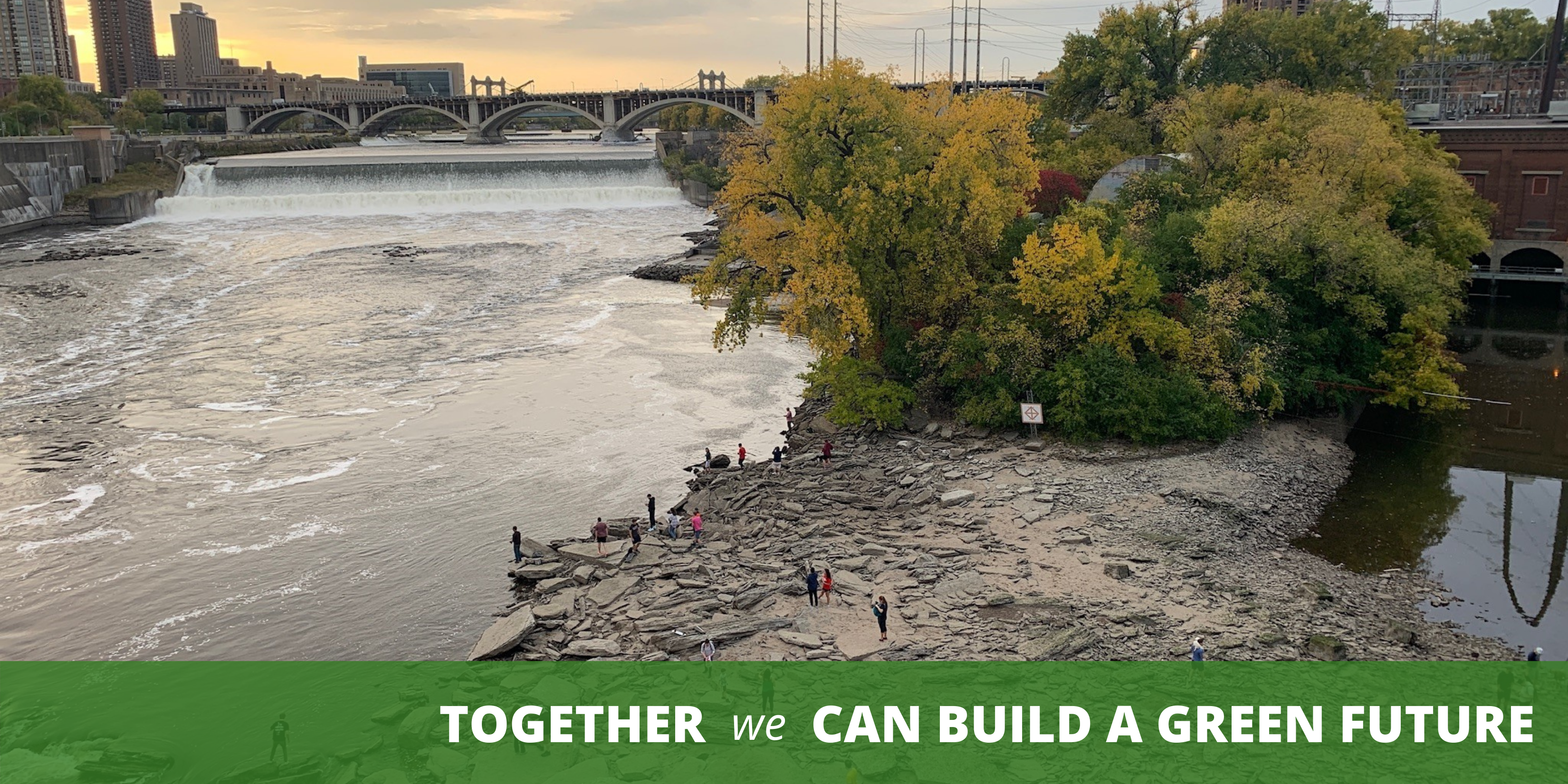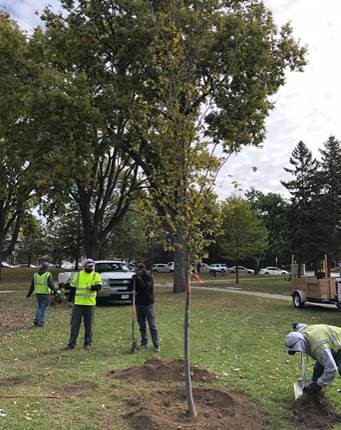
Urban Tree Carbon Offset Program
Green Cities Accord, in partnership with the Minneapolis Park and Recreation Board and Hennepin County, has completed three urban tree carbon offset projects in Minnesota, part of the Twin Cities Climate Resiliency Initiative. Through City Forest Credits, a national nonprofit carbon registry, the projects have achieved third-party verification and have released the first issuance of carbon offsets. Green Cities Accord has enrolled over 33,000 urban trees in its carbon offset program, ensuring that these trees will be protected and maintained for at least 25 years.
As project operator, Green Cities Accord is responsible for selling the carbon offsets released to the projects. Proceeds from the sales of these carbon offsets will fund additional tree planting and maintenance by our partners. Green Cities Accord is seeking partners interested in supporting climate resiliency in their local communities through the purchasing of carbon offsets.

What is a Carbon Offset Program?
Carbon offset programs provide an opportunity for companies or individuals to offset their unavoidable carbon footprint by purchasing carbon credits from projects that reduce or remove greenhouse gas emissions. Carbon offset credits are generated by a variety of projects that reduce greenhouse gas emissions or increase carbon sequestration. In an urban tree carbon offset program, not only are the trees sequestering carbon, but there are co-benefits that are quantified in resource unit and dollar value generated by the trees including stormwater interception, particulate air pollution capture and heating and cooling energy use reduction. In addition, trees contribute to our mental health, provide us with oxygen, help reduce the effects of climate change, benefit wildlife, help reduce crime, create local jobs and are a good investment of public dollars. Urban tree carbon offset programs provide a path for companies to take local climate action and purchase credits from projects that also contribute to the health and well-being of communities.
Frequently Asked Questions
1. What is Green Cities Accord’s role in the carbon offset program?
Green Cities Accord is the project operator, the entity who undertakes a project, registers the carbon credits, and is ultimately responsible for monitoring, and reporting for the 25 year project duration. Green Cities Accord will also be responsible for the sale of Carbon+ Credits generated by each project.
2. How does Green Cities Accord receive carbon credits?
Green Cities Accord registers tree planting projects with City Forest Credits, the national carbon registry for greenhouse gas emission reduction and removal for tree projects in cities and towns. A carbon registry is a non-profit organization that develops and administers protocols, which includes carbon quantification methods, validation, and third-party verification. After verification, City Forest Credits will issue and track credits for the project duration in a transparent registry system. Learn more at cityforestcredits.org/.
3. How is City Forest Credits different from other carbon registries?
City Forest Credits is a registry dedicated to urban forestry that has developed a Standard and Protocols that define the set of rules and requirements that tree planting or preservation projects must follow in order to earn third-party verified carbon credits.
4. How much is one carbon credit worth?
One carbon credit is equivalent to an emission reduction of one metric ton of CO2 (tCO2e).
5. Why are urban tree carbon credits special?
In addition to sequestering carbon, urban trees provide other quantifiable benefits to the urban core including the reduction of stormwater runoff, air pollution, urban heat effects, and heating and cooling costs. More than that, trees contribute to our mental health, provide us with oxygen, help reduce the effects of climate change, benefit wildlife, help reduce crime, create local jobs and are a good investment of public dollars.
6. Who will Green Cities Accord sell Carbon+ Credits to?
Green Cities Accord seeks local companies interested in purchasing Carbon+ Credits that are working on reducing overall carbon emissions. Carbon+ Credits will be sold to companies that have publicly committed to reducing their carbon emissions and will not be sold to companies that are solely using Carbon+ Credits to achieve carbon neutrality.
7. Where do the proceeds from Green Cities Accord Carbon+ Credits go?
Approximately 80% of proceeds go directly back to the tree planting partner to fund additional tree plantings and maintenance. The remainder covers administrative fees of the carbon registry and project operator.
8. Do carbon offset programs allow polluters to go on polluting?
A common concern about carbon offset programs relates to how companies use carbon credits. Often referred to as a form of greenwashing, it is feared that companies will use carbon offset credits to achieve all of their greenhouse gas reduction goals, rather than make the investments needed to significantly reduce their own carbon footprint. Green Cities Accord will not sell Carbon+ Credits to companies that are solely using carbon credits to achieve carbon neutrality.
9. How do carbon credits change the way trees are valued?
Carbon+ Credits represent third-party verified additional carbon storage that provide companies a way to contribute to green, healthy and equitable cities through urban forest projects. Trees enrolled in carbon offset projects have a monetary value based on the carbon they are storing, therefore urban tree carbon credit programs initiate a market driven way to increase the inherent value of trees.